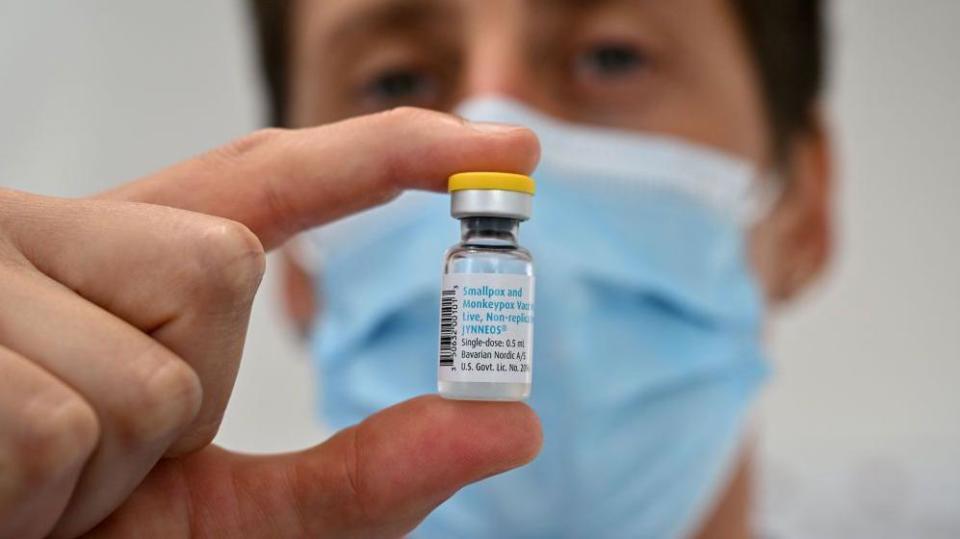What is mpox and how is it spread?

A new strain of the mpox virus is spreading quickly in the Democratic Republic of Congo, and experts say it is the most dangerous variant they have seen.
Mpox, which used to be called monkeypox, is endemic in parts of west and central Africa and cases have been on the rise on the continent for decades.
In 2022, a worldwide epidemic of mpox affected Europe, Australia, the US and many other countries.
How common is mpox?
Mpox disease is caused by the monkeypox virus, a member of the same family of viruses as smallpox, although it is much less severe.
The virus was originally transmitted from animals to humans, and is more common in countries close to tropical rainforests.
In these regions, there are thousands of cases and hundreds of deaths from the disease every year - with children under the age of 15 worst affected.
There are two main strains of the virus known to exist. The milder one caused a global outbreak in 2022 which spread to nearly 100 countries that do not usually see the virus.
The second, more deadly strain is endemic in central Africa - it is behind the new recently discovered strain in DR Congo.
The two types carry different risks of disease and mortality.
What are the symptoms?

Initial symptoms include fever, headaches, swellings, back pain and aching muscles.
Once the fever breaks, a rash can develop, often beginning on the face then spreading to other parts of the body, most commonly the palms of the hands and soles of the feet.
The rash, which can be extremely itchy or painful, changes and goes through different stages before finally forming a scab, which later falls off. The lesions can cause scarring.
The infection usually clears up on its own and lasts between 14 and 21 days.
Serious cases can see lesions attack the whole of the body, and especially the mouth, eyes and genitals.

How is it spread?
Mpox spreads from person to person through close contact with someone who is infected - including through sex, skin-to-skin contact and talking or breathing close to another person.
The virus can enter the body through broken skin, the respiratory tract or through the eyes, nose or mouth.
It can also be spread through touching objects which have been contaminated by the virus, such as bedding, clothing and towels.
Close contact with infected animals, such as monkeys, rats and squirrels, is another route.
During the global outbreak in 2022, the virus spread mostly through sexual contact.
The current DR Congo outbreak is being driven by sexual contact, but has also been found in other communities.
Who is most at risk?

Most cases are often found in people who are sexually active and men who have sex with men. People with several partners or new sexual partners can be most at risk.
But anyone who has close contact with someone with symptoms can catch the virus, including health workers and family members.
Advice is to avoid close contact with anyone with mpox and clean your hands with soap and water if the virus is in your community.
Those who have mpox should isolate from others until all their lesions have disappeared.
Condoms should be used as a precaution when having sex for 12 weeks after recovery, the World Health Organization (WHO) says.
How can it be treated?
A therapy designed to treat smallpox can also be useful for treating mpox, but there is limited research on how effective it is.
Outbreaks of mpox can be controlled by preventing infections - the best way of doing that is with vaccines.
There are three vaccines that exist but only people at risk or who have been in close contact with an infected person are usually able to have it.
The WHO does not currently recommend vaccinating entire populations.
Further trials of vaccines against new mpox strains are needed to understand how much protection they provide.


